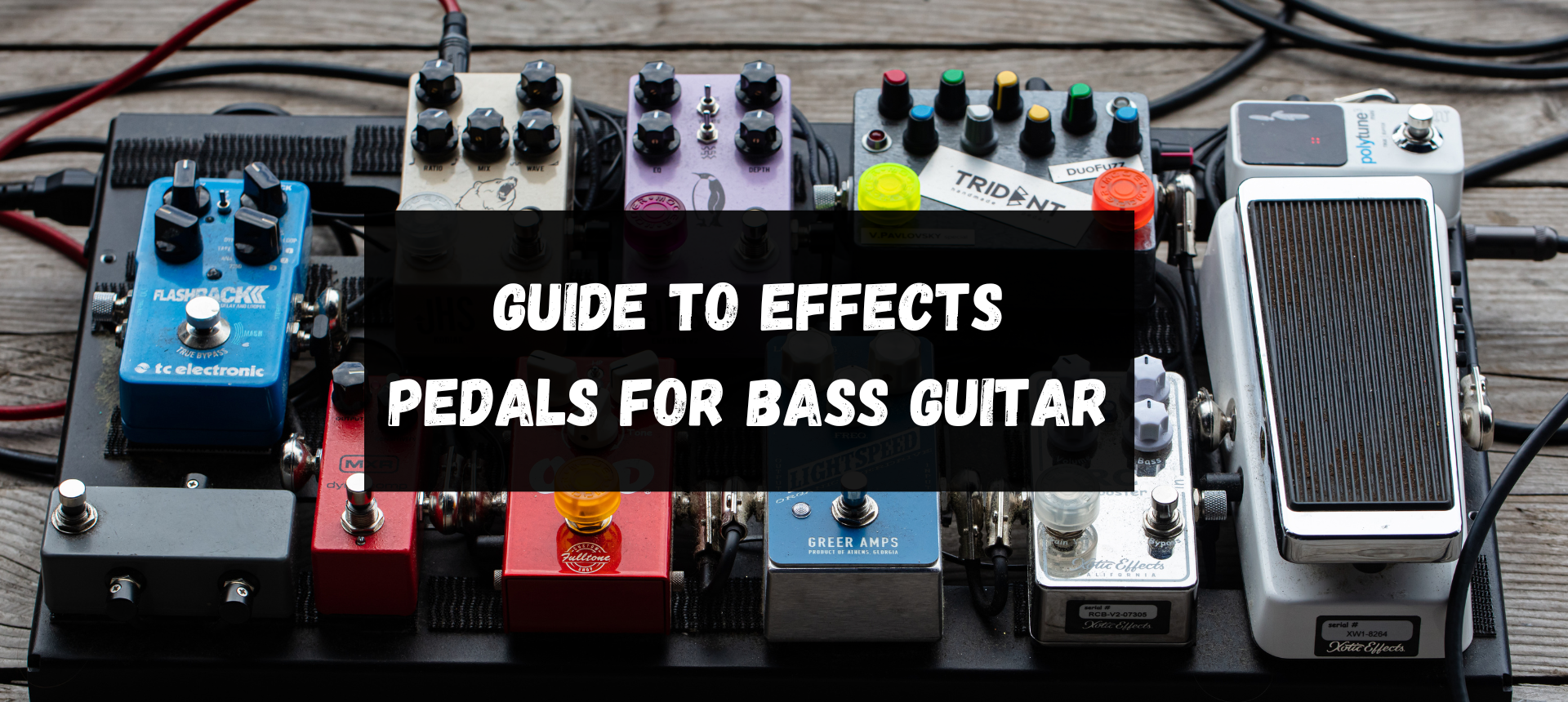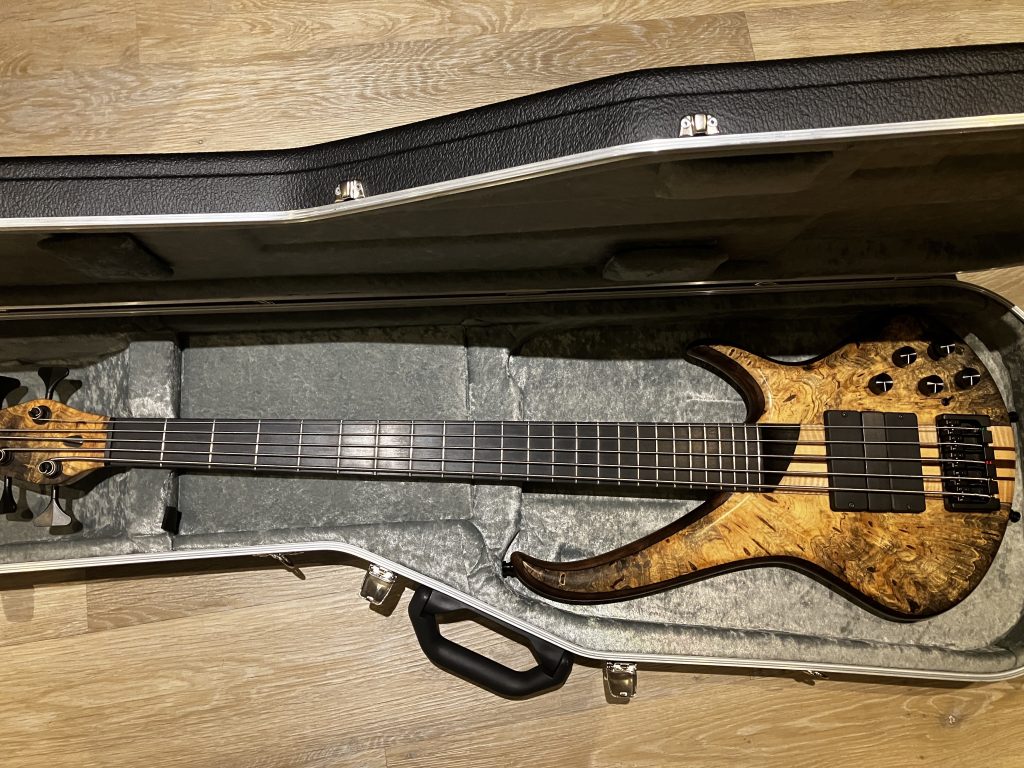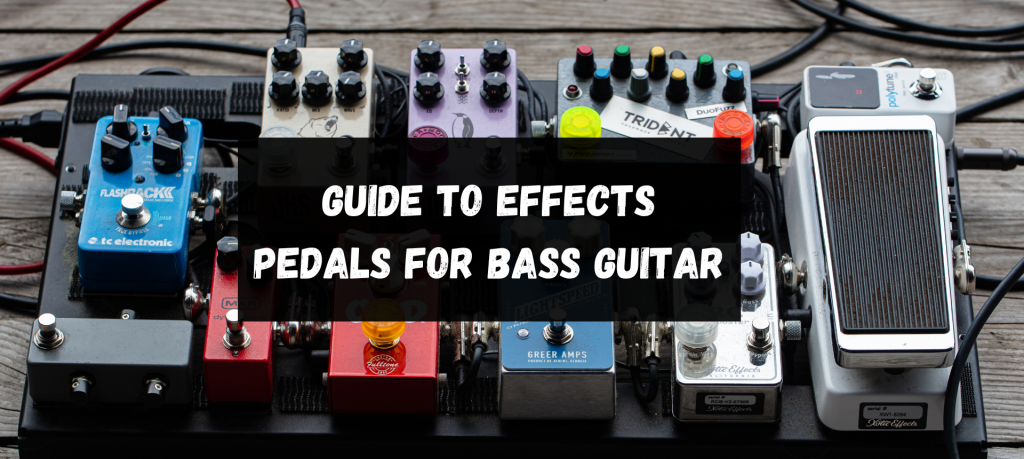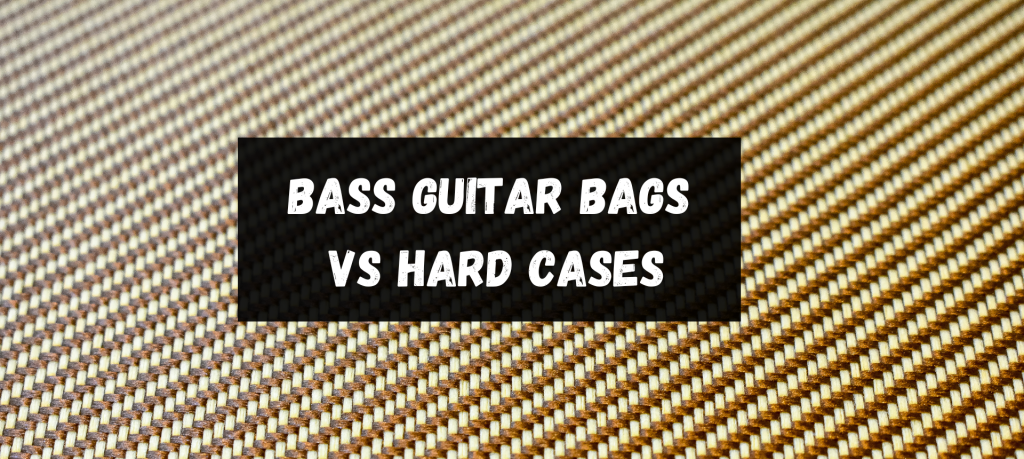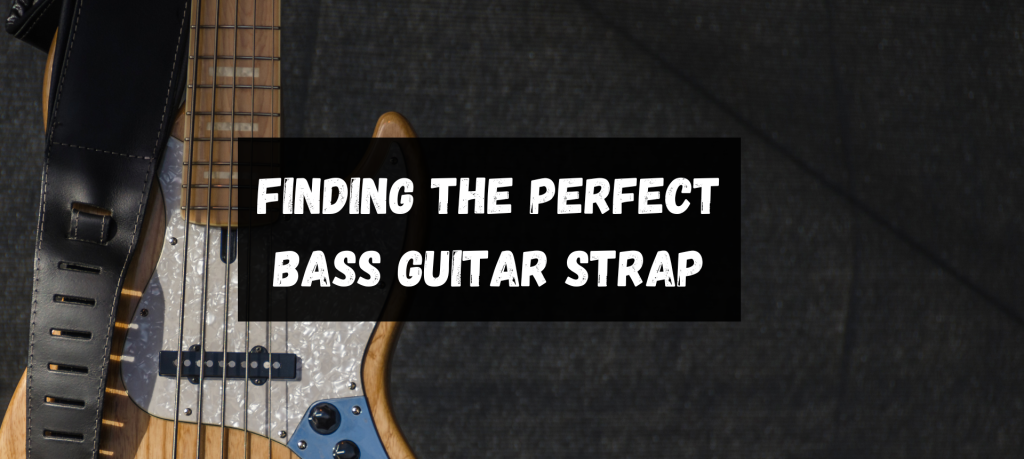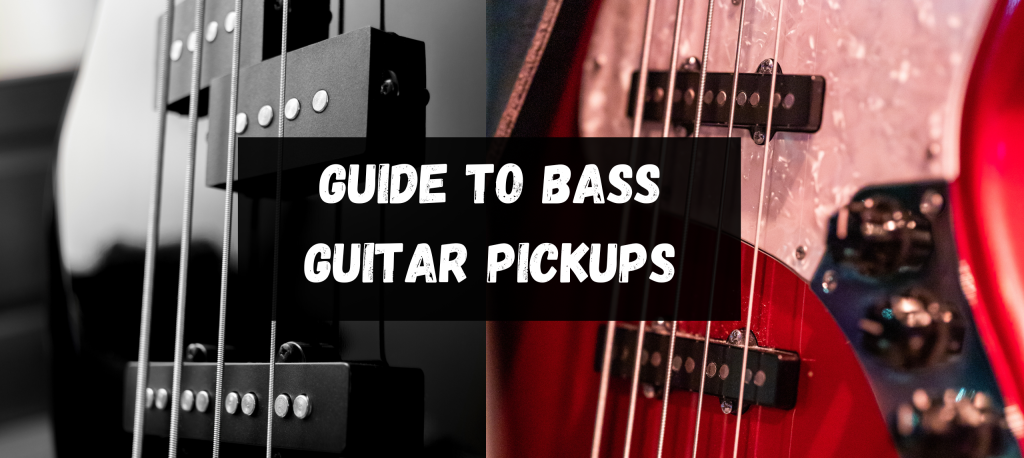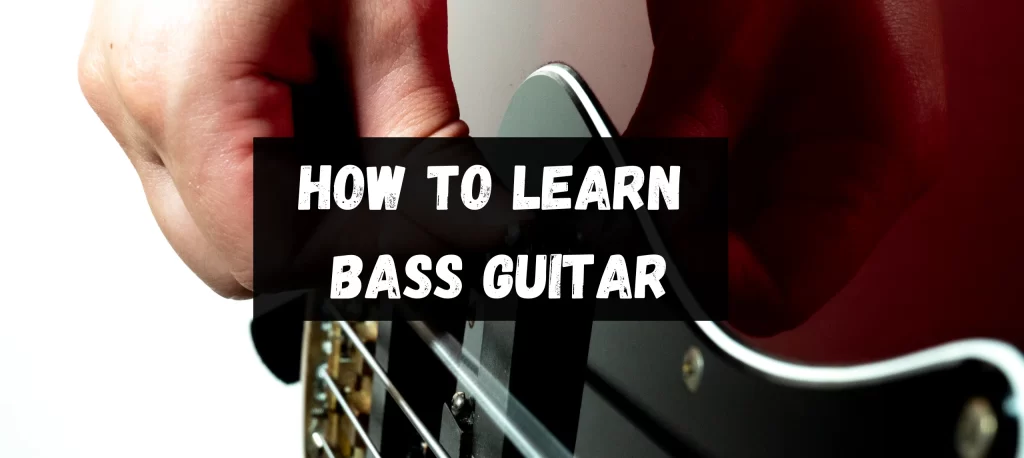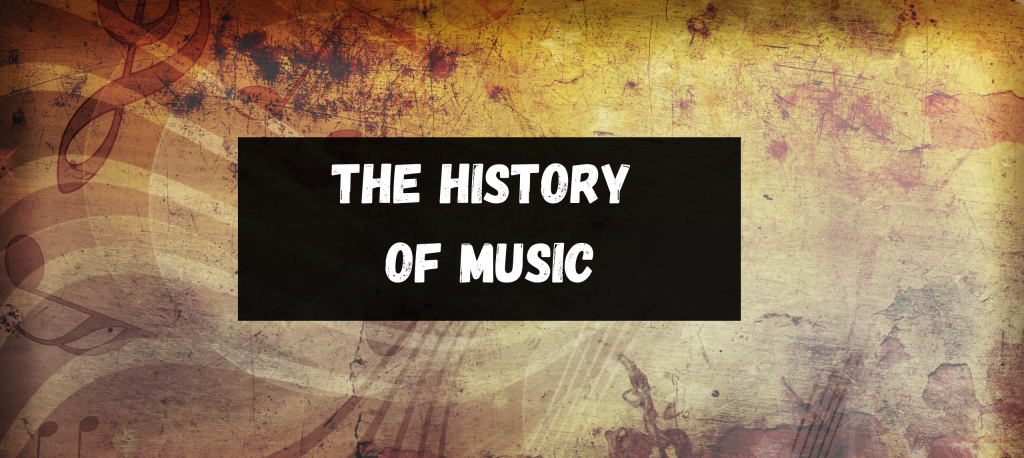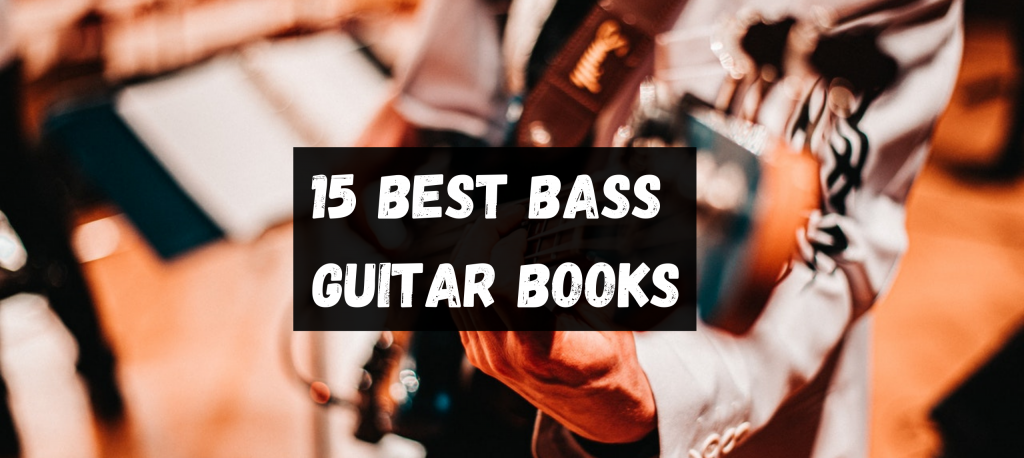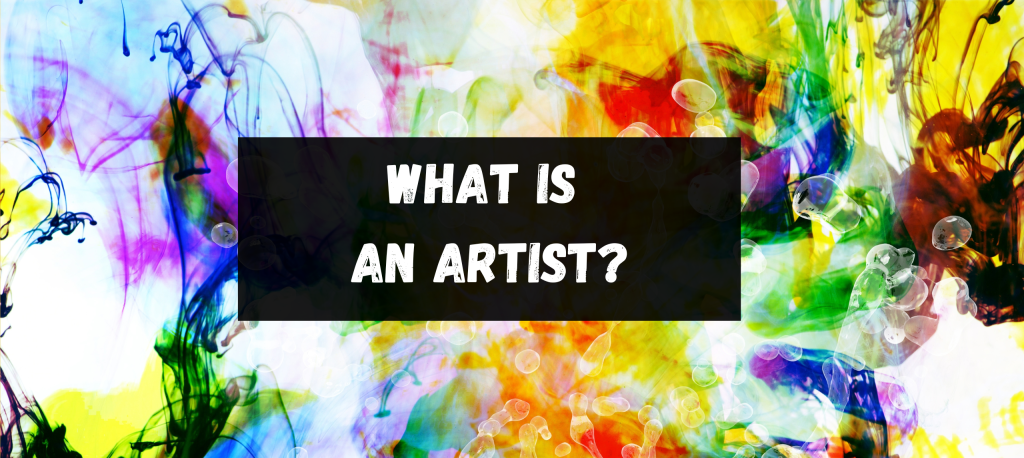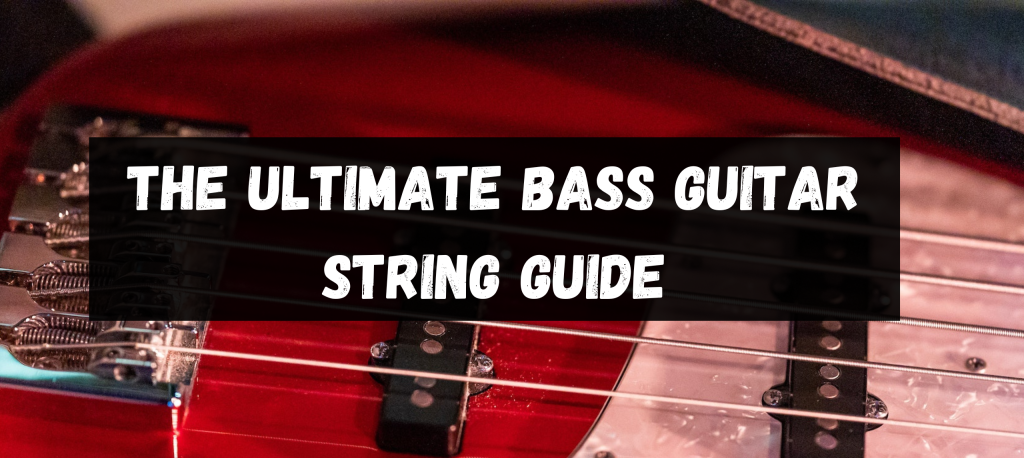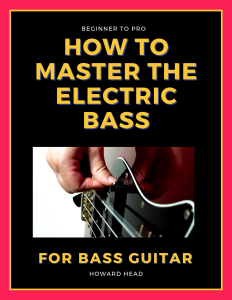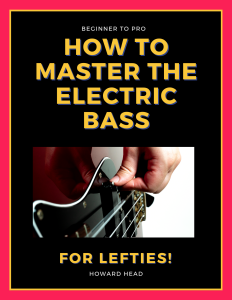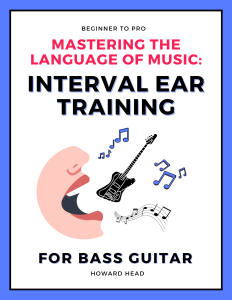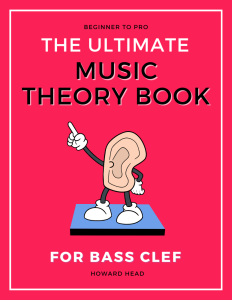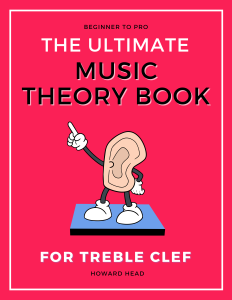March 9, 2024
Howard
Effects pedals, although not used too often with bass guitars, can change the timbre of your sound. Effects pedals are quite expensive but also very fun to play around with and can add something unique to your sound. From the sultry growl of overdrive to the otherworldly sweeps of modulation, effects pedals have become an interesting component a bassist can use to define their voice and artistic expression. Let’s explore.
You can get multi-effects units; however, they may not sound as good as individual pedals that are designed specifically for a particular effect. When adding effects on top of other effects, the sound might get quite muddy, and there’s a preferred order to prevent this from happening, though it is really all down to experimentation. You have to think like a producer. This is the preferred order going from first to last.
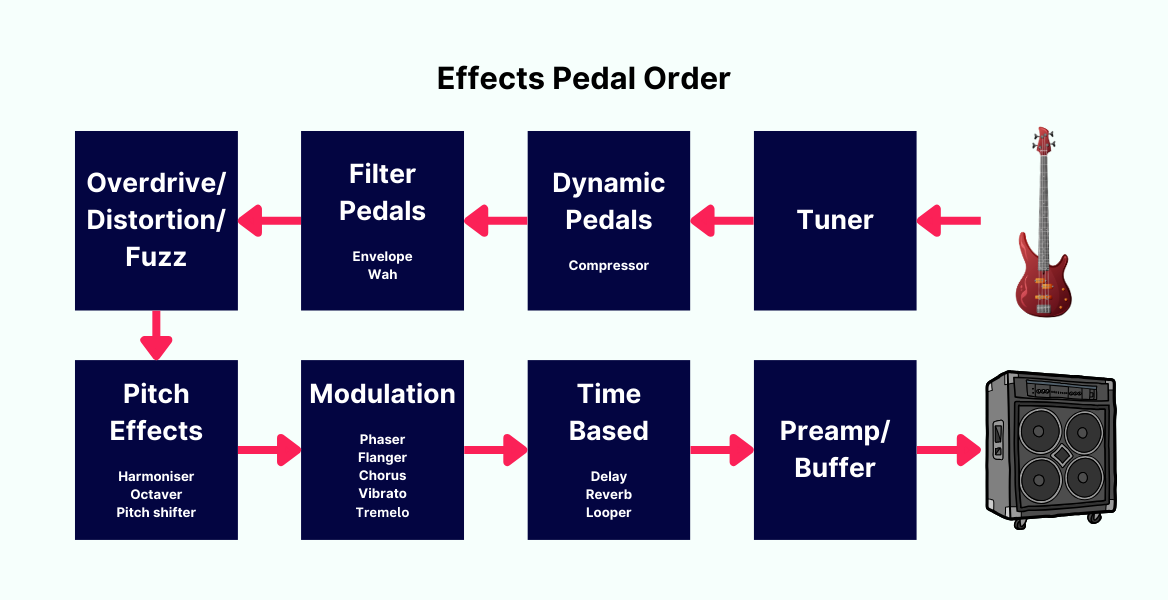
Dynamic Pedals
There is usually only one pedal in this category, and it is the Compressor. A Compressor automatically reduces the dynamic range (compressing and evening the dynamics). They can make the tone fatter, increase sustain and increase the presence of an instrument in a band setting. Some parameters can be set:
Threshold
Determines at which volume level the sound should reach until it is compressed. Sounds below the level will not be compressed. If you lower the threshold enough, you can turn a Compressor into a Limiter, which is used to filter the highest dynamic peaks.
Ratio
Determines how much compression is applied to the sound that has passed the threshold. Ratio gives you a certain change in output, for a given change in input.
A ratio of 5:1 for example means that the input signal has a change in 5dbs which will result in a change of 1db at the output. Thus reducing the dynamic range.
Attack
Determines how long it takes to apply the compression after sound passes the threshold. The effect can be more subtle with a slower attack.
Release
Determines how long it takes for the compression to stop when the sound falls below the threshold. This is the setting that increases sustain.
Output gain
The overall volume level will be reduced if the ratio was high, and you will have to bring up the output gain so that the sound level returns to its original level.
After capturing the dynamics, we can then add effects on top. When looking at these pedals, you will usually see the parameters’ dry’ and ‘wet.’
Dry
Means how much of the original signal you want blended. Wet – Means how much of the ‘effect’ you want blended.
Envelope Filter/Wah Pedals
Filters adjust the cut off frequencies passing through it and are changed depending on the dynamics of your playing. It is used a lot in Funk!
Overdrive/Distortion/Fuzz Pedals
These effects are quite similar and can sometimes cross territories.
Overdrive
Responds to dynamics of your playing and mimics the sound of a tube amplifier. If you play aggressively, you will get an aggressive overdrive sound, and when you play softly, you will get a less overdriven sound.
Distortion
A clipping device that produces a complex, gritty sound with a lot of enharmonic overtones that are dissonant to your fundamental note, making complex chords sound off.
Fuzz
A more extreme version of distortion and gives the sound quality a more synth-like effect. Think of the MUSE bass tone.
Something to be mindful with these types of effects is that they tend to remove bass frequencies, which isn’t very good if you’re a bass player (Although it worked well for Lemmy!). If the Distortion and Fuzz pedals are turned up high, they will create a lot of ‘noise’, and a noise gate might be required to tame it. Some pedals may even a noise gate built into them, like the Electro-Harmonix Deluxe Bass Big Muff Pi.
Pitch Effects
These pedals focus on the pitch that goes into them and synthesises additional signals along with the ‘wet’ signal.
Octaver
The additional synthesised signal is usually an octave lower to create a synth-like sub-bass effect. The classic is the OC-5, which offers precise tracking and a broad tonal palette, catering to vintage and contemporary octave effects. However, some octave pedals can even synthesise a signal an octave higher to reach into the frequency range of an electric guitar e.g. the Electro Harmonix POG. You can usually change how much dry and wet signal you want, and if you turn the dry off, you get a completely synthesised tone.
Harmoniser
The additional synthesised signal will be interval related, and you have to select a key in which to use it in. You will have to know your musical theory to pull off using this!
Pitch shifter
Combines both elements of the Octaver and Harmoniser, usually used in conjunction with an expression pedal to control the pitch.
Modulation
Modulation means that another signal modifies your signal. (not to be confused with the same word modulation, which uses the word to describe change key.) They all use an LFO which stands for Low-Frequency Oscillator, and they are used to generate a variable waveform.
Phaser
Phase occurs when you have two identical signals, so a copy of your signal is created. However, the copied signal has an all-pass filter applied, where any frequency can be cut/boosted and moved around using a LFO.
Flanger
Your dry signal mixes with a 5-25ms delayed signal, and an LFO is used to adjust the delay times. Sometimes the output can be fed back to the input to create feedback.
Chorus
Your dry signal mixes with a delayed and slightly detuned signal. The LFO adjusts the pitch in the additional signal. The delayed signal is longer than the flange, typically between 20-50ms. This effect was viral in the 80s.
Vibrato
Is similar to chorus but the signal is not copied, and so your dry signal becomes the wet signal. The pitch is variably increased and decreased to achieve the vibrato sound.
Tremolo
The volume is variably increased and decreased to achieve the tremolo sound.
Time-based Effects
These pedals are usually placed last in the chain.
Delay
Records the input signal and plays it back after a set period. Let us get into some parameters:
Time – The time it takes for the repeat to occur after you initially play a note. Feedback – Gives you the number of repeats.
Level – The volume level of the repeats.
Reverb
Reverb occurs when sound hits a surface and reflects to the listener. The listener can get an idea of the physical space through the reverberations. An effects
pedal will simulate these reverberations. This effect isn’t used much with bassists as if used too extreme can muddy the sound. However, when used subtly can fill space. Let’s look at some parameters:
Effect ratio/level – Allows you to mix the dry and wet signals. More ‘dry’ will make the sound seem ‘closer’ and more ‘wet’ will make the sound seem ‘further away.’
Decay – How long it takes until the reverberations are inaudible.
Pre-delay – The time between the dry signal and wet signal. E.g. how far away the surface is from the instrument.
When using a lot of effects/ long cables, your signal strength can be lost. But there are a couple of things that tackle this problem.
Preamp/Buffer
Preamp
If you are to get any bass pedal, you should get this one.
The classic is of course the Tech 21 SansAmp Bass Driver DI V2 Pedal. A game-changer in tonal flexibility, this pedal is perfect for those who crave classic and contemporary sounds. Its versatility is second to none.
The preamp pedal can theoretically be placed anywhere in the chain, however, many (like the SansAmp) has a DI built in. As you’d likely want all of your effects to go through the front of house via the DI (an XLR output sent to the FOH to be heard through the PA speakers and your monitors) the preamp is usually best suited at the end of the chain.
Buffer
Preserves the strength of signal running through the setup and you can just put one on the end of your chain.
Line Selector
This pedal allows you to maintain your dry signal going through, which is estrmeley useful for abss guitar. It has two busses which you can use to stack effects onto and blend with your dry signal. As discussed, you do lose the bottom end if you use a lot of effects, so this is particularly useful when wanting to maintain the essence of the instrument while blending in effects.
The only thing you need to be wary of is phasing, and a way to mitigate this is to use EQ pedals.
The classic line selector is the Boss LS-2, and it works like this:
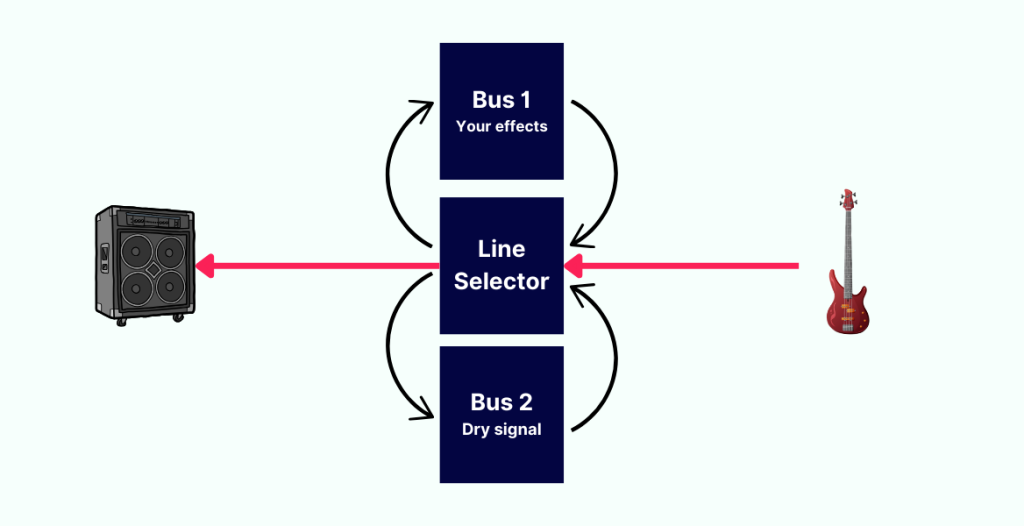
Other Useful Things to Know!
ABY Pedal
Lets you split a signal in two ways. ‘Y’ is representative of the signal going in. The ‘A’ and ‘B’ are representative of the signals you intend to switch. You could switch between two amplifiers or run both simultaneously, or turn it the other way and switch between two instruments into the same amplifier.
True bypass
If you see this on pedals, then the signal remains intact. This signal remains intact because there is a signal that sends to the amp, which clears the effect circuitry.
Loop switcher
Each effect is plugged into the switcher, and you choose whether to turn them on. So your direct signal can pass through the switcher and pass into specific pedals via stomp switches. This way you’re making the connections when you want and not connected to the pedals all the time.
Power Supplies
You are going to need some way of powering all these pedals if you choose to get some. There is no point getting an expensive pedal if you’re powering it with a cheap power source. Every pedal has a specific power requirement, and you can get a lot of different requirements if you mix different brands. To find out what power requirements are for each pedal, look for the voltage (usually 9V,12V) and also the current (measured in milliamps or ma). It is also recommended to power the pedals with isolated DC outputs to eliminate hum.
Building a Pedal Board
Setting up all these effects is very time consuming and so having a board saves a lot of time when gigging. It also minimises things going wrong especially if you get your inputs and your outputs the wrong way round! My drummers mum always had to remind me which way round they went! And so with these wise words from Michelle: The input is the pathway which connects to the instrument; the output is the pathway that connects to your amplifier!
So my advice is to hook everything up the way you like it and stick them onto a board, so they’re all nicely set up. I used an old piece of kitchen worktop for my first board, so you don’t need it to be made out of an expensive material, just something that works. Although mine was ridiculously heavy and I did change it!
Sticking pedals onto the boards
Most pedals have a rubber bottom, if you choose to use velcro tape to secure the pedals (most boards are) then you should remove this by plying it off and then velcro to the bottom to ensure it sticks on your board properly. Of course, you could use cable ties, but you’re somewhat restricted if you ever need to move any pedals about.
Conclusion
In the eloquent words of Miles Davis, “It’s not about standing still and becoming safe. If anybody wants to keep creating, they have to be about change.” So, take the plunge, stir the waters of creativity, and start playing around with some bass effects.
In the best music stores you can actually test out effects pedals in their practice rooms so you can try before you buy!

Howard Head
I turn confused bass enthusiasts into bass gods through a simple and logical process.

